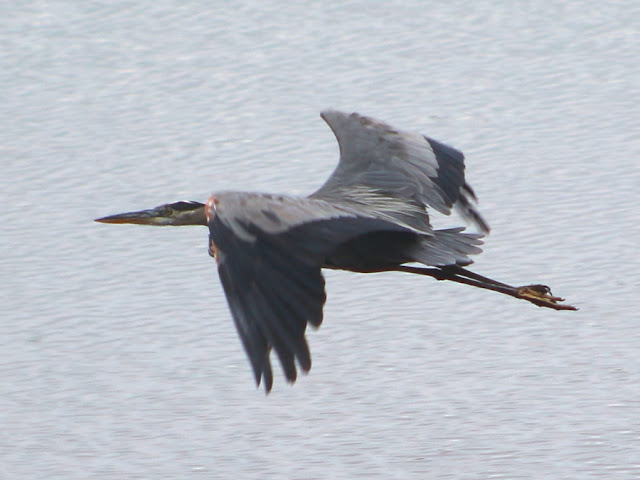Mother nature is letting us know that September is here even if we don't look at a calendar. The days are still longer than the nights but she's giving us plenty of clues that the equinox is approaching, the most evident signs being served up by the flora around the region.
 |
| Goldenrod blooming. |
When the golden rod lights up the fields and the edges of the roads we know the days are becoming cooler. Often intermixed with goldenrod are several varieties of wild asters.
 |
| Calico Asters. |
These calico asters have tiny white blossoms that look like miniature daiseys and though the centers of these are yellow they can also develop a delicate lavender color.
 |
| These yellow and lavender asters were seen last year in early October. |
Another hint is coming from the trees.
 |
| Red maple (See the spider web?) |
The red maples are always the first to betray the hopes of summer by exposing their true colors hidden from us for the past several months. I often see them turning first near bodies of water and thought wet roots caused their early color, but I recently heard a repuatable source report that red maples at high and dry location start to turn color at the same time as those near water. I do remain convinced that weak subjects turn earlier, supported by the fact that damaged or broken branches will start turning red in July as the nutrient flow to the leaves is restricted, slowing the process of photosynthesis.
Animals are also telling us the season is progressing, including our two loon chicks which are certainly acting like teenagers at this point. One of the chicks (Coco I think based on behavior - I can't tell them apart visually any more even when they are side-by-side) has been expressing her independence, spending time away from mom and her brother. (Remember, we don't really know the sex of either chick).
One day this week she spent a long time on her own doing her morning preening. She would slap her wings strongly against the water, sputtering along in the lake for several yards with water splashing all around her. Then she'd preen her back feathers followed by rolling over with her belly up to work on her bright white belly feathers. Part of what she was doing here is taking oil from her oil gland and spreading it over all her feathers to provide waterproofing for them. Finally she would stretch up high in air and spread her wings, give them a shake to realign her feathers, then settle back into the lake. For about 15 seconds. Then it was lather, rinse, and repeat. This went on for quite a while until she moved out of my sight. This was all observed far away through binoculars so I have no pictures to share. But another day when the family was together I did get a picture of one of the chicks spreading its wings, and wow, they have quite a wingspan now.
As big as they are, they are still happy to have mom prepare a meal for them.
 |
| Mom cooks up breakfast. |
This week I broke one of the rules of wildlife observation. Usually when I come across an animal in its habitat I try my best to not disturb it. This isn't possible with animals like deer which are so attentive to their surroundings that they almost always detect me long before I see them. But when I come across a turtle sunning on a log, or a heron fishing in the marshes I try my best to sneak in a picture and then glide by quietly without interrupting its feeding or its warming of its body. But I will make an occasional exception.
One knows what any bird will do when it perches for more than just a moment.
My sending this heron on its way gave me a chance to get a good look at its large body and strong legs which are usually hidden beneath those stupendous wings.
 |
| There's a couple of nice drumsticks. |
Heron don't really show many changes as summer advances since their young don't leave the nest until they look almost adult-like. But there are plenty of other signs that summer is waning.
 |
| Winterberry fruit is starting to ripen. |
Winterberries will become a brilliant red and last throughout the winter as the animals slowly consume them, apparently preferring other food sources before turning to winterberry.
Finally, I want to share this great photo a friend took on Friday of ten deer swimming in Lake Winnipesaukee from Mark Island to Bear Island.
 |
| Even the deer are on the move. Photo by Rick Page. |
Note there are a couple of young bucks in that herd. Thanks for sharing Rick!
It may be getting cooler, but that means some of the best outdoor activity weather of the year is just ahead!




No comments:
Post a Comment